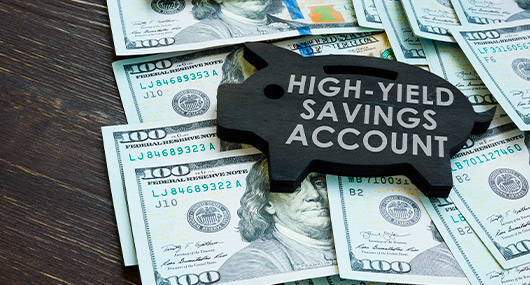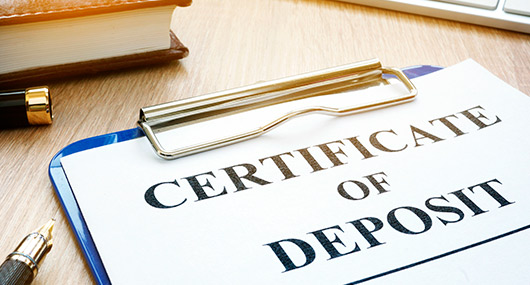As we step into 2025, the financial landscape is shifting yet again. With interest rates in flux, inflation cooling, and the Federal Reserve expected to continue gradual rate cuts, savers must be strategic about where they park their cash. If you’re wondering whether to choose a high-yield savings account (HYSA) or a certificate of deposit (CD), you’re not alone.
The savings account comparison with CDs comes down to their distinct advantages, with the right choice depending on your financial goals, timeline, and risk tolerance. This article will break down the pros and cons of each to help you make an informed decision for the year ahead.
High-Yield Savings Accounts: Flexible, Liquid, and Competitive

What is a High-Yield Savings Account?
A high-yield savings account functions similarly to a traditional savings account but offers significantly higher interest rates. While regular savings accounts average a meager 0.43% APY, many high-yield options provide 3.70% to 4.50% APY as of early 2025.
Pros of High-Yield Savings Accounts
- Liquidity and flexibility – You can access your money at any time without penalties, making it ideal for emergency funds or short-term goals.
- Competitive interest rates – Even though rates fluctuate, many online banks and credit unions offer returns that rival short-term CDs.
- FDIC insurance – Up to $250,000 per depositor is protected, ensuring your savings remain secure.
- No fixed terms – Unlike CDs, you can keep adding or withdrawing money without restrictions.
Cons of High-Yield Savings Account
- Variable interest rates – The rate you earn today could drop if the Fed continues cutting interest rates in 2025.
- Limited monthly withdrawals – Many banks impose a limit on the number of withdrawals per month (typically six).
- Lower rates than longer-term CDs – If you don’t need immediate access to your funds, you might earn more with a CD.
Certificates of Deposit (CDs): Stability and Predictability

What is a CD?
A certificate of deposit (CD) is a savings vehicle that locks in your money at a fixed interest rate for a set period. Terms typically range from three months to five years, with longer terms offering higher interest rates.
Pros of CDs
- Fixed interest rates – Your APY is locked in for the entire term, protecting you from future rate drops.
- Higher returns for longer terms – Many CDs currently offer rates above 4.00%, making them an attractive option for those comfortable with locking in funds.
- Safety and FDIC insurance – Just like HYSAs, CDs are insured up to $250,000 per depositor.
- Encourages saving discipline – Since withdrawing early results in penalties, you’re less likely to dip into your savings.
Cons of CDs
- Limited liquidity – Your funds are inaccessible until the CD matures unless you pay an early withdrawal penalty.
- No additional deposits – Unlike an HYSA, once you open a CD, you can’t add more money to it.
- Missed opportunities if rates rise – If interest rates increase after you lock in a CD, you could miss out on better earnings elsewhere.
Key Differences: Which One is Right for You?
| Feature | High-Yield Savings Account | Certificate of Deposit |
| Liquidity | Highly liquid, access anytime | Locked until maturity, penalties for early withdrawal |
| Interest Rate | Variable, can rise or fall | Fixed, remains the same for the term |
| Best Use Case | Emergency fund, short-term savings | Long-term goals, saving for a fixed date |
| Risk | Rates can decrease over time | Locked-in rate could underperform if rates rise |
| Flexibility | Unlimited deposits & withdrawals (with some restrictions) | One-time deposit, no additions |
2025 Market Trends: What to Expect

Federal Reserve Rate Cuts and Their Impact
Fed reduced rates in late 2024 and is expected to continue cuts through 2025. This means high-yield savings rates will likely decline, which will make CDs a more attractive option for those seeking stability.
However, some experts predict that inflation concerns and economic factors might slow down these cuts. If the Fed takes a wait-and-see approach, HYSAs could remain competitive throughout the year.
Bank Competition Keeping Rates Up
Even as rates decline, competition among banks—especially online institutions—will keep HYSAs and CDs offering relatively high returns. Checking the latest rates before committing will be crucial.
Smart Strategies for 2025
1. CD Laddering: Best of Both Worlds
If you want to earn higher rates but need occasional access to your funds, consider a CD laddering strategy. This involves dividing your money into multiple CDs with staggered maturity dates. For example:
- $5,000 in a 6-month CD
- $5,000 in a 1-year CD
- $5,000 in a 2-year CD
- $5,000 in a 3-year CD
- $5,000 in a 5-year CD
As each CD matures, you can either reinvest at new rates or use the money as needed to balance the liquidity with growth while securing higher rates for longer terms. This strategy helps mitigate interest rate risk and ensures you always have access to funds at regular intervals.
2. Diversification: Split Between HYSA and CDs
Many financial advisors recommend keeping emergency funds in an HYSA while allocating long-term savings to CDs. This ensures you maintain access to cash while maximizing earnings on money you don’t need right away. Some savers also mix in money market accounts or treasury bills to further spread out risk and liquidity options.
Also, brokerage CDs—offered through investment platforms—can provide access to potentially higher rates with FDIC insurance while allowing for secondary market trading if you need to liquidate early.
3. Stay Flexible and Reassess Rates Regularly
Interest rates will likely change throughout 2025. Keep an eye on both HYSA and CD offerings to ensure your money is always earning the best possible return. Consider stepping CD maturity dates so that you’re not locked into a single rate at any given time.
Some savers also take advantage of blended strategies, such as keeping short-term funds in an HYSA while using a mix of short-term and long-term CDs to balance returns and liquidity.
4. Utilize Promotional Offers
Banks and credit unions often run limited-time offers on CDs and HYSAs to attract customers. Watch for special rate promotions or higher initial deposit bonuses that can maximize your returns. Some banks offer step-up CDs, where your interest rate automatically increases over time, or bump-up CDs, which allow you to request a rate increase if market rates improve.
Also, consider online-only banks and credit unions, which often provide better interest rates than traditional banks due to lower overhead costs.
5. Automate and Monitor Your Savings
Set up automatic transfers from your checking account to your HYSA or CD to ensure consistent saving habits. Use budgeting apps or banking tools to track interest rate changes and optimize your strategy as market conditions shift. Regularly reviewing your savings performance can help you adjust your approach to align with evolving financial goals.
By implementing these strategies, you can navigate 2025’s economic landscape with confidence, ensuring that your savings grow efficiently while maintaining the necessary liquidity for unexpected expenses.
Make the Right Choice
Choosing between a high-yield savings account and a CD in 2025 boils down to your financial needs:
- Need easy access to your money? Go with a HYSA.
- Want to lock in today’s rates before they drop? Consider a CD.
- Not sure? Use a combination of both, or try CD laddering for flexibility.
By understanding the strengths and limitations of each option, you can make a smart, strategic decision that helps you grow your savings while keeping your financial goals in sight. To learn more about CDs and high-yield savings bank accounts, visit a Bank of South Texas branch or contact us at (956) 687-4260.


